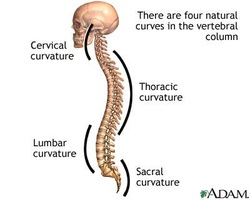By: Albert Huang, DC We all have heard the saying, 'don't judge a book by its cover'. Unfortunately, when it comes to physical appearance, first impressions mean everything. Statistics say that we critique and make impressions of someone within the first 7 seconds of meeting them. The way we present ourselves can influence how we are perceived by others. Body language and posture can articulate personal feelings, emotions, and physical wellbeing without a word being said. It has been shown that 55% of effective communication is articulated through body language, 38% via vocals, and 7% with words. Successful leaders have strong command in body language: a presence that reflects confidence, competence, and charisma. One medical study in Colorado, noted that people with poor posture at work reported lower energy levels leading to lethargy and reduced productivity, and that the greatest potential challenge to posture during this age of technology is sitting and working at a computer. Bad posture affects nervous system function and reduces performance output by altering spinal alignment and nerve signalling. A small, inwardly, hunched over posture articulates weakness and uncertainty whereas a tall, open, expansive posture boasts confidence and power. Making an effort to improve your posture will lead to many positive outcomes such as better body mechanics, increased energy, awareness, and self-assurance. Tune into your mind and body; show up for success.  What are the Fundamentals of Good posture? In order to improve posture, we need to establish ideal positioning and best mechanics. Our spine has 4 natural curves, a cervical lordosis, a thoracic kyphosis, a lumbar lordosis, and a small sacral kyphosis. These curves develop during childhood and are natural adaptations of being bi-pedal creatures. The spinal curves provide architectural strength and support to the spine. These curves act like a 'spring' to distribute vertical pressures on the spine and balance body weight. If the spine were absolutely straight, it would be more susceptible to buckle under compressive forces. Simple procedures to maintain your spinal curves include keeping your head centered over your body away from an anterior head carriage position. Keep this in mind especially when studying or working in front of a computer as these tasks cause the head to drift anteriorly. A simple exercise to keep the neck in proper position is the 'neck retraction exercise'. Simply contract your posterior neck muscles and tuck your chin in and backwards. Hold for 15-20 seconds - repeat daily. When standing or sitting, avoid prolonged slouching positions. Maintain an erect posture to preserve the natural lumbar curve to better absorb compressive loads. Slouching places strain on the posterior elements of the spine, compressing the vertebral discs and tensioning the spinal ligaments and muscles. Sustaining this constant pressured posture leads to symptoms of pain and an increased risk of injury. The third area to focus on is to keep our shoulders (scapulas) slightly pulled back (retracted), away from anterior forward rounding. This ensures optimal alignment of the glenohumeral joint to limit tension in the surrounding shoulder muscles and articulation. Adopting this retracted-neutral shoulder position also opens up the thorax to promote greater chest expansion during inspiration. It also reduces the likelihood of impingement related issues in the shoulders. With this said, these are all general recommendations to follow. There is no such thing as perfect posture! The best position is one that is in continual motion. Movement is postures best remedy. Body language speaks a thousand words, so get in touch with your body and strike the best pose you want to be judged for.
1 Comment
11/6/2015 11:41:41 pm
Your post is very good and it most beneficial.
Reply
Leave a comment |
AuthorPosts inspired by the team at Platinum Health & Wellness. Archives
June 2025
Categories
All
|
|
 RSS Feed
RSS Feed